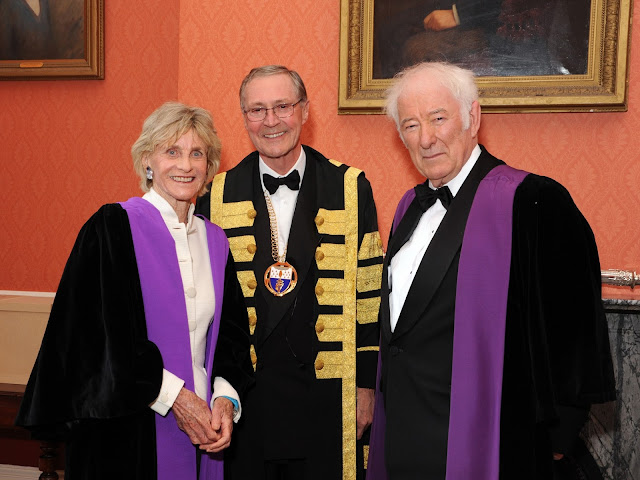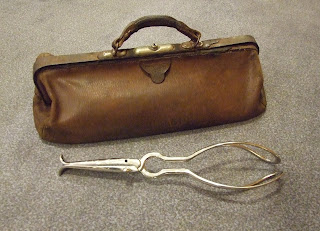In Memoriam: Seamus Heaney
RCPI was saddened by the death of the poet and Noble Laureate Seamus Heaney, who was also an Honorary Fellow of RCPI.
 |
Ambassador Jean Kennedy Smith, Dr John Donohoe (President, RCPI) and Seamus Heaney
on the occasion of their conferring as Honorary Fellows of RCPI, June 2011 |
Seamus Heaney received his Honorary Fellowship in June 2011, at the conferring ceremony Padraic Mac Mathuna, an RCPI Fellow and family friend of Seamus Heaney delivered the citation. He started with a quote from Franz Kafka who remarked that 'In Medical Science one tries to tell people, in such a way as to be understood by everyone, something that no one ever knew before. But in poetry, it's the opposite'. Mac Mathuna traced Heaney's education and career, his contributions to Irish life, his publications and awards, including that of Nobel Prize in Literature in 1995 for his 'works of lyrical beauty and ethical depth, which exalt everyday miracles and the living past'. Mac Mathuna ended his warm tribute to a personal friend, with a quote from another Nobel laureate, Albert Einstein; 'the most beautiful experience we can have is the mysterious. It is the source of all true art and science'.
The worlds of art and medical sciences can be seen meet in one of Heaney's poems, Out of the Bag. In this work Heaney's child-self imagines that he and his siblings all 'came in Doctor Kerlin's bag'.
 |
Early 20th century doctor's bag and forceps
from RCPI's medical insturment collection |
Dr Joseph Philip Kerlin being the local doctor, based in Magherafelt, co. Derry, who delivered Heaney and his siblings. Heaney describes Dr Kerlin arriving for each delivery in his fur-lined coat, 'with his bag in his hand, a plumb ark by the keel'. He is surrounded by the tools of his trade, 'a whiff of disinfectant, a Dutch interior gleam … highlights on the forceps'. For a local doctor in rural Ireland in the first part of the twentieth century the delivering of babies would have been an important part of their work, and a doctor's bag was an evocative symbol of their profession.
In the poem Heaney catches a glimpse of Dr Kerlin's blue eyes, and is transported to the imaged room where Dr Kerlin's babies are assembled:
At which point he once turned his eyes upon me,
Hyperborean, beyond-the-north-wind blue,
Two peepholes to the locked room I saw into
Every time his name was mentioned, skimmed
Milk and ice, swabbed porcelain, the white
And chill of tiles, steel hooks, chrome surgery tools
And blood dreeps in the sawdust where it thickened
At the foot of each cold wall. And overhead
The little, pendent, teat-hued infant parts
Strung neatly from a line up near the ceiling—
A toe, a foot and shin, an arm, a cock
A bit like the rosebud in his buttonhole.
In the second and third parts of the work, Heaney reflects on some of the traditions of healing, both ancient and religions, he recalls a visit to the ruined temple of Asclepius, and the incident when, as an altar boy, he fainted during a procession at the healing shrine of Lourdes in 1956. Asclepius, was the God of medicine and healing in ancient Greece, his daughter Hygeia (also mentioned in the poem) was the goddess of health. Asclepius symbol, a snake entwined staff, known as the rod of Asclepius remains one of the symbols of medicine to this day.
At the end of the poem, Heaney returns to the childhood mysteries that surround childbirth;
And opens her eyes, then lapses backInto a faraway smile whose precinct of vision
I would enter every time, to assist and be asked
In that hoarsened whisper of triumph,
"And what do you think
Of the new wee baby the doctor brought for us all
When I was asleep?"